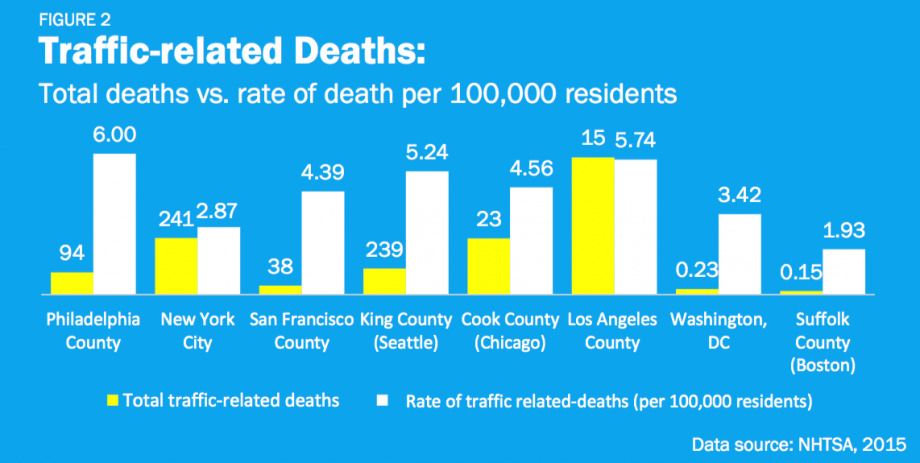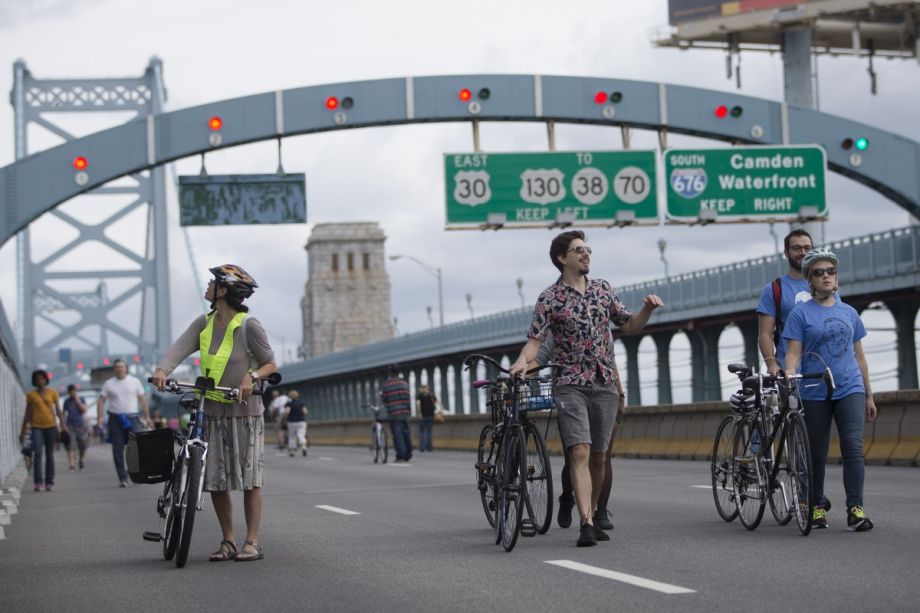Following the example of San Francisco and Washington, D.C., Philadelphia’s new Vision Zero Action Plan prioritizes data collection in its quest to end traffic related deaths by 2030.
Mayor Jim Kenney’s office released the blueprint — technically a draft plan for public comment — Tuesday. It calls for a numbers-gathering effort to better assess “high injury networks” and dangerous behaviors and target investment accordingly, while emphasizing that street-level injuries do not affect all Philadelphians equally.
“We understand that traffic crashes disproportionately affect Philadelphia’s low-income neighborhoods,” it states. “In fact, nearly one out of five traffic-related deaths and severe injuries occur in neighborhoods where the majority of residents live below the poverty line. We are committed to data-driven decision-making that prioritizes investments in places with the most need for traffic safety improvements.”
Philadelphia has a relatively high rate of traffic related deaths compared to a number of peer cities, and has a rate over two times as high as that of New York City.

(Credit: City of Philadelphia)
And that’s problematic, particularly through a public health lens. Residents living in low-income neighborhoods are “disproportionately affected by chronic diseases, such as diabetes, hypertension and heart disease,” according to the document. And what could help prevent those diseases? Exercise. And what will keep residents from exercising? Unsafe streets.
As the Philadelphia Inquirer reports, the action plan takes aim at certain practices to help those unsafe streets — say, illegal sidewalk closures — and calls for more protected bike lanes and red light cameras. But its scope is wider, proposing changes in the areas of licensing and inspection that will affect how the police and public health departments conduct business. It also touches on the procurement process for safety improvement work.
“It’s really about integrating [Vision Zero] into the way we do business,” Kelly Yemen, the city’s complete streets director, told the Inquirer.
New York and San Francisco were the first U.S. cities to adopt Vision Zero, as Next City has previously reported. Washington, D.C., adopted the philosophy in 2015, which states that traffic deaths are preventable (not “accidents”) through good policy and design. San Francisco took a particularly data-driven approach (more about that here), and D.C. followed in its footsteps, with an online map that allowed residents to highlight the most dangerous or frustrating areas of their commute.
As Jen Kinney wrote earlier this year, however, not all data-collection is equal, especially for the purposes of Vision Zero. To really prioritize health equity, researchers need to find specific information on who is most at-risk on unsafe streets.
“If you can’t say with precision how traffic safety problems or disparities are greater in a specific community, then it’s very difficult to go from there to address interventions,” Elva Yanez, director of health equity at the Los Angeles-based Prevention Institute, told her.
Philadelphia’s action plan is the result of an executive order signed by the mayor in November that created a Vision Zero task force, according to Philly Voice. You can read the full text here.

Rachel Dovey is an award-winning freelance writer and former USC Annenberg fellow living at the northern tip of California’s Bay Area. She writes about infrastructure, water and climate change and has been published by Bust, Wired, Paste, SF Weekly, the East Bay Express and the North Bay Bohemian
Follow Rachel .(JavaScript must be enabled to view this email address)
















